


Donate Now
and become
Forum Supporter.

Many perks!
<...more...>


|

04-29-2015, 06:47 PM
|
|
Senior Member
|
|
Join Date: Jul 2006
Zone: 5b
Location: Michigan
Posts: 3,077
|
|
 This one will never win a beauty contest
This one will never win a beauty contest
Orchids, by and large, are coveted by many for their exotic beauty. However, not all are so graced. Not exactly a “pretty face” – many folks find the flowers of Coryanthes to be rather grotesque or even obscene in appearance. Still, I find members of this genus to be fascinating in design and complexity.
For those unfamiliar with this genus, the following information may be of interest, whilst there rest of you can just skip ahead to the photos…
Members of this genus are commonly referred to as “bucket” orchids due to their deep, bucket-shaped lips/labella. Each flower comes equipped with a pair of “faucets” which drip liquid into the bucket. While this may sound like a prelude to life of carnivory, it instead plays a role in the plant’s reproductive strategy.
Coryanthes are pollinated by euglossine bees – typically a single species of bee for each species of Coryanthes. Only the males visit and hence pollinate the flowers. The flowers offer neither food nor nectar. Instead, the flowers produce aromatic oils/compounds which the males gather and mix with other harvested fragrances to create a pheromone attractive to the females of their species.
When a male lands on the flower, he begins to gather the waxy oils with specialized hairs on his legs. As he is busily working away, he may slip and fall into the bucket. The liquid in the bucket gets his wings wet and thus prevents him from flying out. Furthermore, most of the bucket is lined with slippery downward pointing hairs preventing his climbing out. (Sounds like many of the pitcher plants, no?) There is one path he can take, however. It is “paved” with small knobs he can get a foothold upon and leads out through the spout at the back of the bucket. As he passes through the spout and passes the column wherein the pollinia are located, the pollinia are deposited onto his thorax. The passageway then constricts holding him immobile until the glue binding the pollinia to him has set. Once the glue has set, he is released … hopefully to visit and pollinate another flower.
The flower bud developed fairly quickly … for an orchid … particularly near the end.

The bud looking like something out of “Invasion of the Body Snatchers” or some kind of weird “man in the moon” face. Those are droplets produced by the plant along the bottom right edge of the bud.
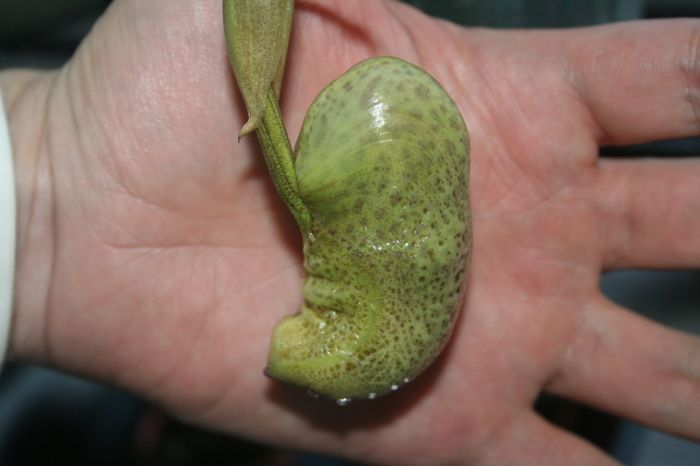
It swelled over the course of a couple of days to about 3in tall.
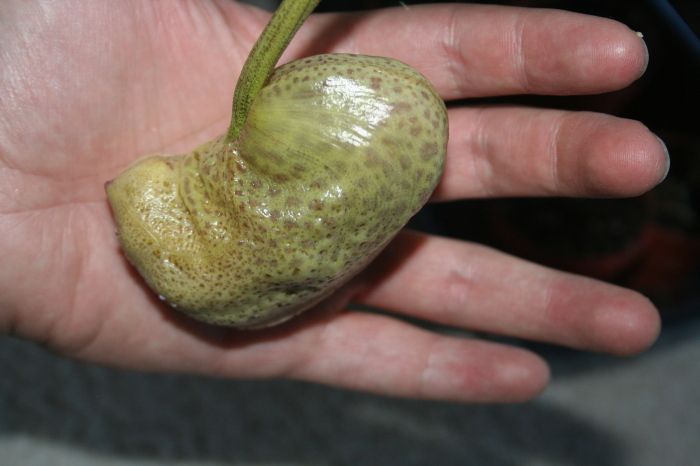
First day open. Faintly fragrant. Hopefully will grow stronger over the next couple of days. Difficult to ID just what the fragrance is like.
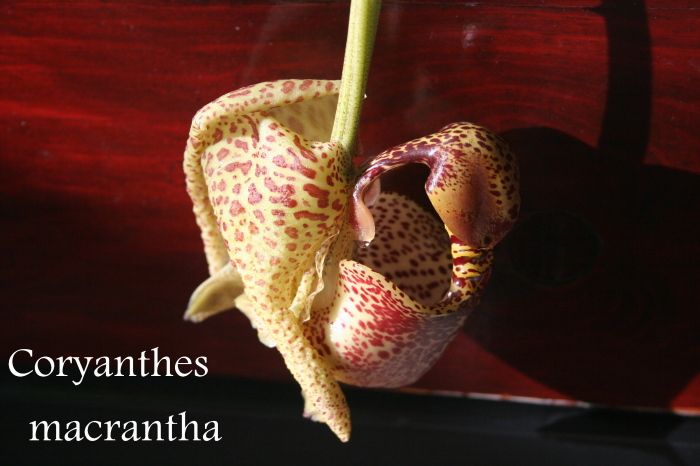
A peek down into the bucket.
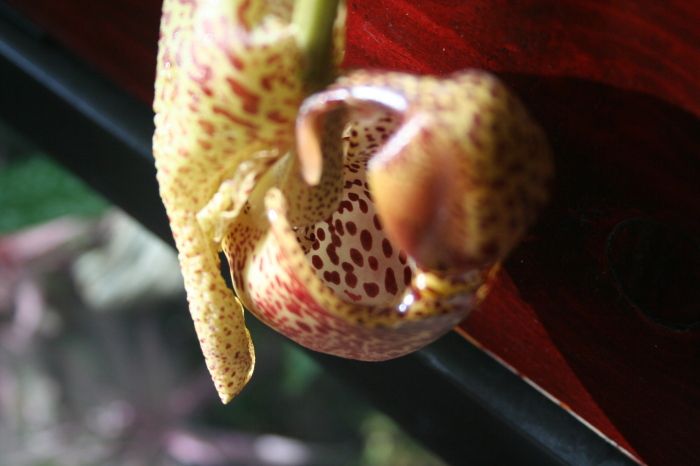
The “leaky” faucet
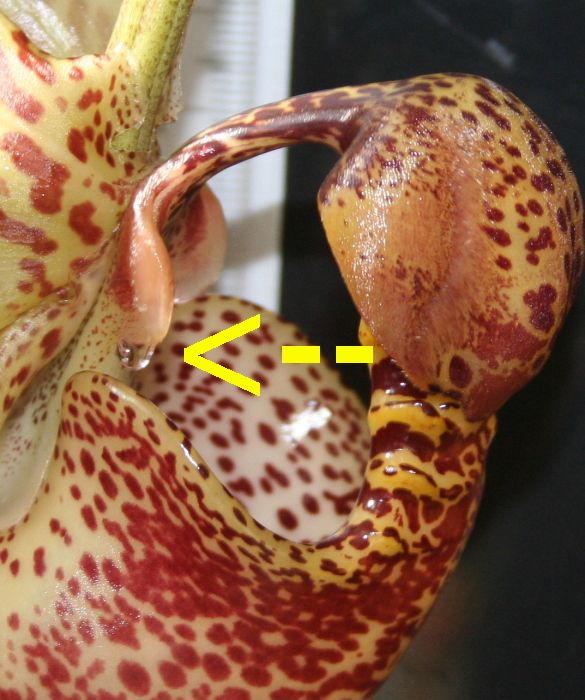
View of the backside of the hypochile & pedicel
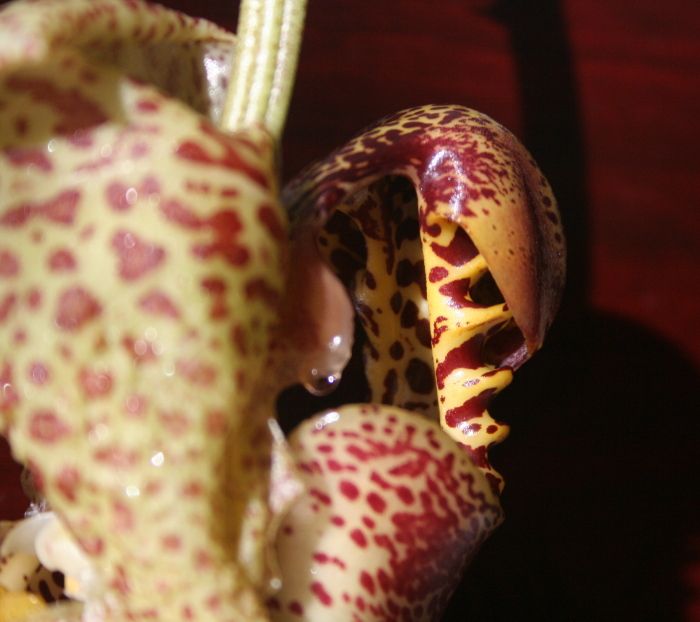
The spout through which the bee would exit.
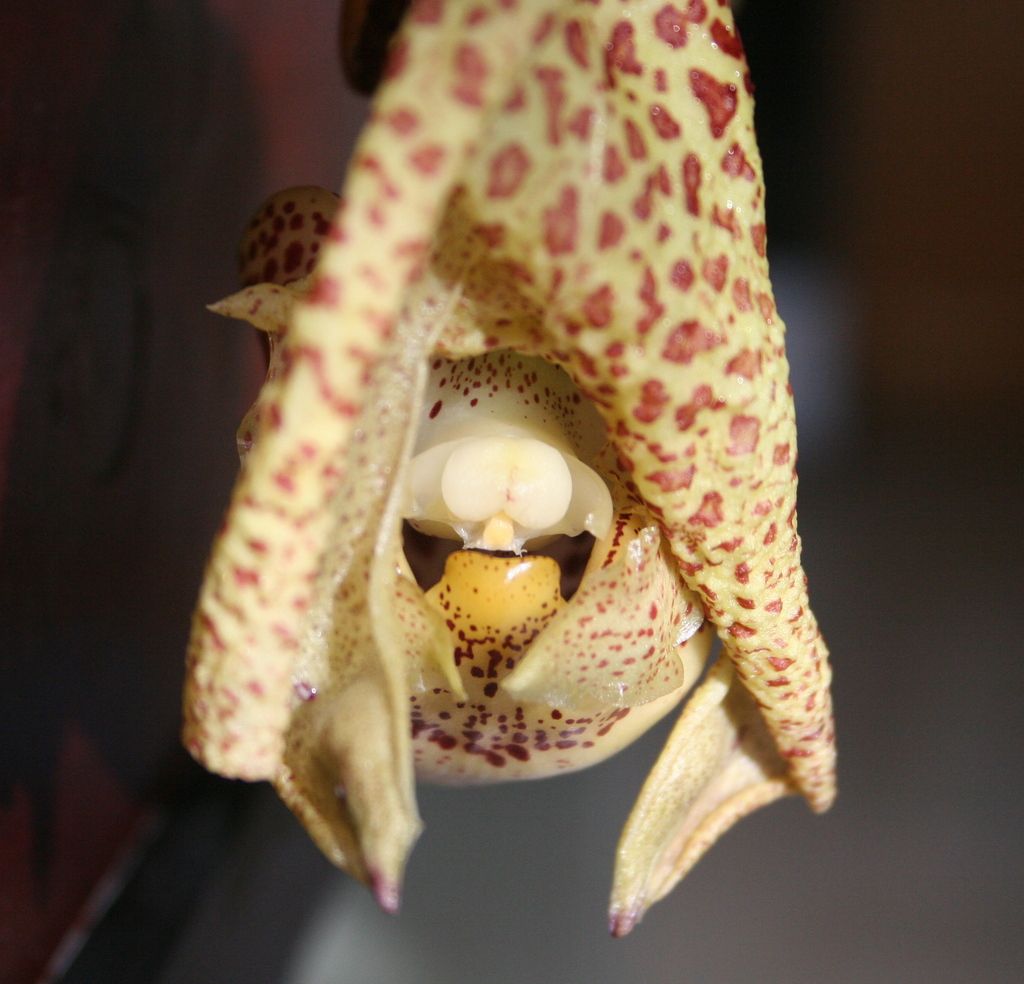
For those who can find beauty in such a flower, one must take the time to enjoy them while one can. For, unfortunately, like most if not all members of the Stanhopea alliance, the flowers are short-lived – typically only 4 or 5 days.


|
|
Post Thanks / Like - 12 Likes
|
 wintergirl
wintergirl, Lynn in Michigan, gnathaniel, Trollsvans, sbrofio, Pattywack, Joseia, tarev, DeaC, katrina, JDT, My Green Pets liked this post
|
|
|
|
Tags
|
bucket, flowers, flower, days, species, genus, bud, pollinia, beauty, spout, coryanthes, couple, typically, hairs, orchids, passes, liquid, glue, bee, pollinate, gather, visit, males, set, droplets  |
|
Currently Active Users Viewing This Thread: 1 (0 members and 1 guests)
|
|
|
 Posting Rules
Posting Rules
|
You may not post new threads
You may not post replies
You may not post attachments
You may not edit your posts
HTML code is Off
|
|
|
All times are GMT -4. The time now is 08:14 AM.
|








































 Threaded Mode
Threaded Mode
